’Martino Gamper: Design is a State of Mind’ at the Serpentine Sackler Gallery in London
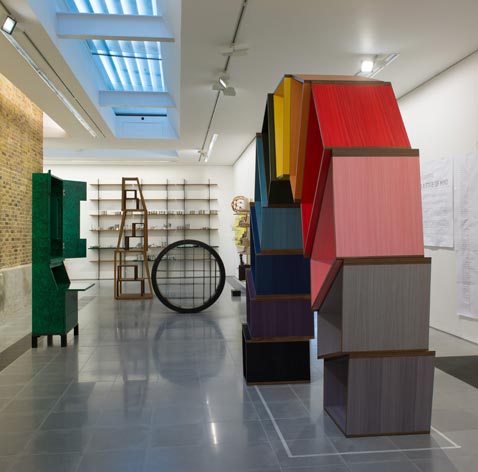
The best ideas can be summed up pretty easily. And the idea behind Design is a State of Mind, a new show curated by Martino Gamper at the Serpentine Sackler Gallery is 'interesting things collected by interesting people on interesting shelves'.
'I didn't want to do an historical show,' says Martino, walking me around the exhibition. 'And I didn't want a "what design is now" kind of show. But I did want to use design to display design.'
Simple enough. And given that the Serpentine gave Gamper an open brief and three months to get the show ready, you can see why he resisted unnecessary complication. Except it isn't really simple of course. To work well, and the show works very well indeed, Gamper had to get all the elements, all these stories, working together.
He started with the shelves. Now that Gamper is a central and influential figure in the British design scene, it is easy to forget that he is actually Italian. But an immersion in Italian design, especially in the work of designers like Gio Ponti, who continued to work with craftsmen while their peers embraced industrialisation, is clear in his selection. Many of the shelves are rare one-offs, secured from private lenders with a lot of help from Milan's Nilufar Gallery (given the time restrictions, this made more sense than trying to deal with institutions, Gamper says).
There are shelves from Franco Albini, Ettore Sottsass, Ponti, Andrea Branzi, BBPR, where the R stands for Ernesto Rogers (cousin of Richard), Michele De Lucchi and Vico Magistretti, as well as Charlotte Perriand, Alvar Aalto for Artek, Vitsoe, Ercol, a number of Gamper's own shelves and a bit of Ikea thrown in.
The collections come from friends, friends of friends, tutors and students who Gamper knew were inveterate hoarders of inspirational objects. Most of them are also designer makers. In the simplest terms, Gamper wants to show how the collections, the materials and the mechanics influence that making.
Some of these collections suggest a collector and a maker immediately; a stash of rocks, some black, some white, smoothed and shaped by time and nature, has been borrowed from Michael Anastassiades, as you might have guessed. So too the pop-bright plastic fantastic of Bethan Laura Wood's haul.
Some collections are tightly focused, personal/professional obsessions; Maki Suzuki's bricks; Jurgen Bay's bestiary; Max Lamb and Gemma Holt's collection of Bernard Leach (and acolytes pottery); the heavy-duty hoes and other gardening equipment collected by the artist Richard Wentworth; and the wooden spoons collected by the photographer Jason Evans (disappointingly Konstantin Gric couldn't locate his box full of prized coat hangers in time for the show).
Some of the displays are more eclectic, such as Ron Arad's knuckle duster to carved cat collection for instance. Perhaps the most remarkable collection though has a space all to itself: Enzo Mari's found object paper weights.
Design is a State of Mind is only the second dedicated design show at the Serpentine, following on from Konstantin Grcic's Design Real, which opened in 2009. And the two shows are an instructive contrast; Grcic's qualified techno-optimism set against Gamper's idea of design as bricolage, a messy assembly of what was and what is, of objects that appeal for reasons we don't entirely understand. Gamper is against taste systems but for taste, in the fullest sense. After all, a shelf, however beautiful, is only half a story, if that. It is the bits and bobs, the magpie hauls, that make sense of it.
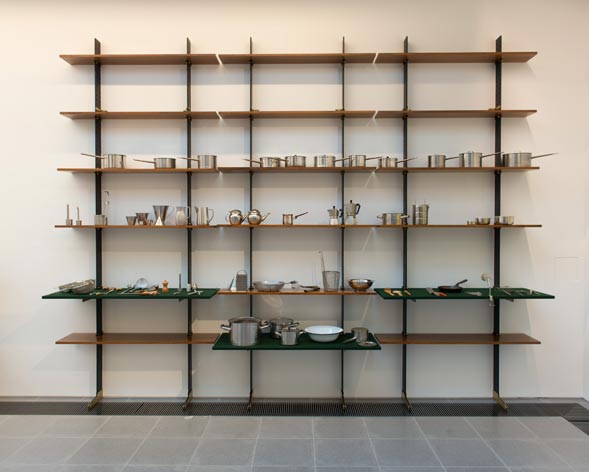
The exhibition is an assortment of 'interesting things collected by interesting people on interesting shelves', says Gamper. Pictured is designer Mats Theselius' collection of kitchenware on a bookcase designed by Ignazio Gardella in 1970.
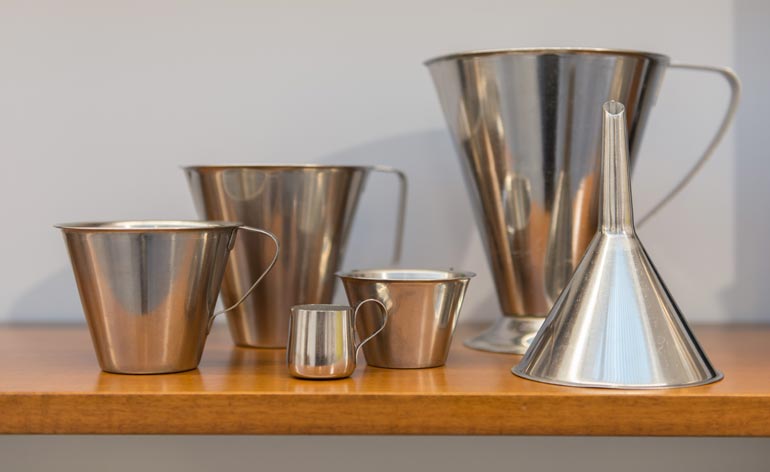
The range of each collection varies; some, like Mats Theselius' shining miscellany of scientific-looking utensils, have been kept purposefully focused, suggesting personal or professional obsessions
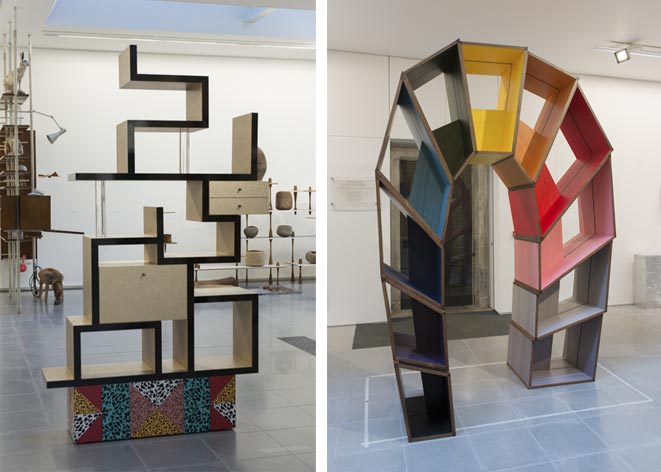
Ettore Sottsass's 'Max' shelving (left) and Gamper's own 'L'Arco della Pace' (right), Shelving (co-produced by Museion, Bolzano, Italy and Pinacoteca Giovanni e Marella Agnelli, Turin, Italy) respectively
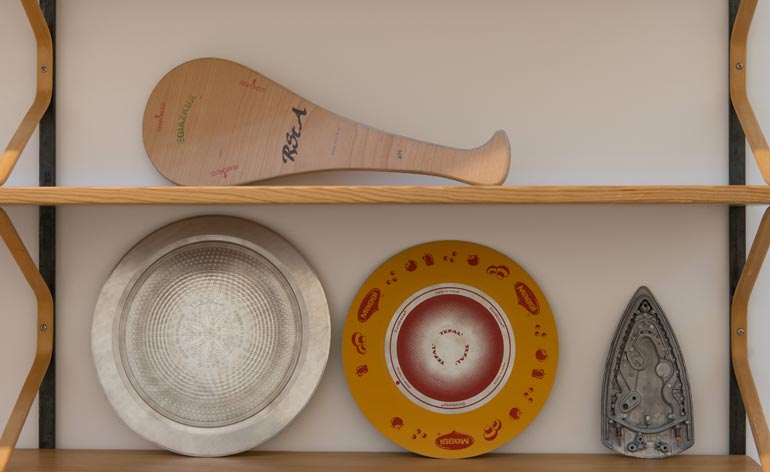
Sebastian Bergne's collection finds a home on Bruno Mathsson's 1943 pine and birch bookcase.
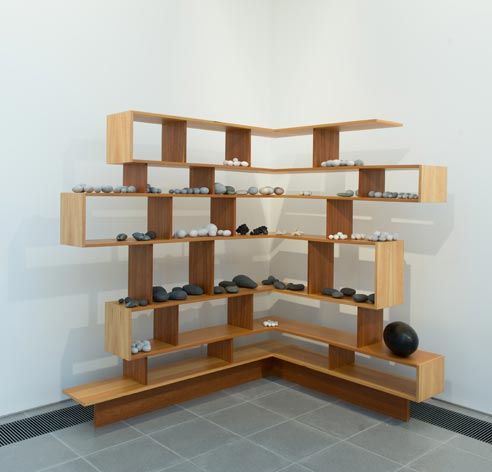
A stash of rocks, some black, some white, smoothed and shaped by time and nature, has been borrowed from Michael Anastassiades, presented on Martino Gamper's 'Booksnake Shelf' from 2002.
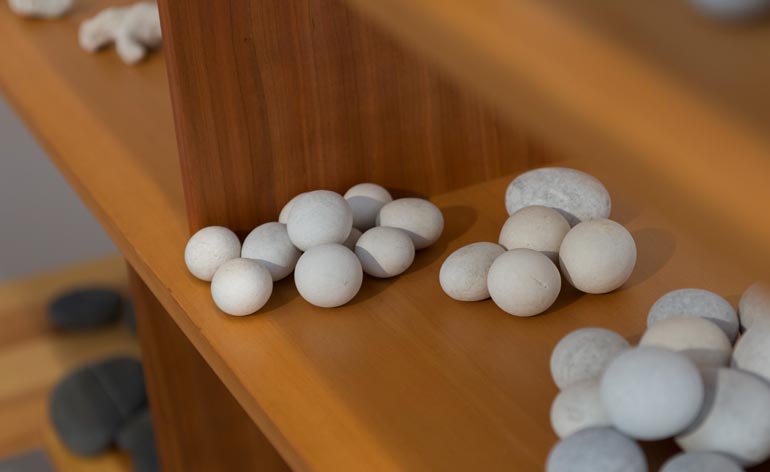
The connection between a designer's objects and their work is obvious in some cases, such as with Anastassiades' pearly pebbles, which bring the orb-like bulbs of his lighting designs instantly to mind.
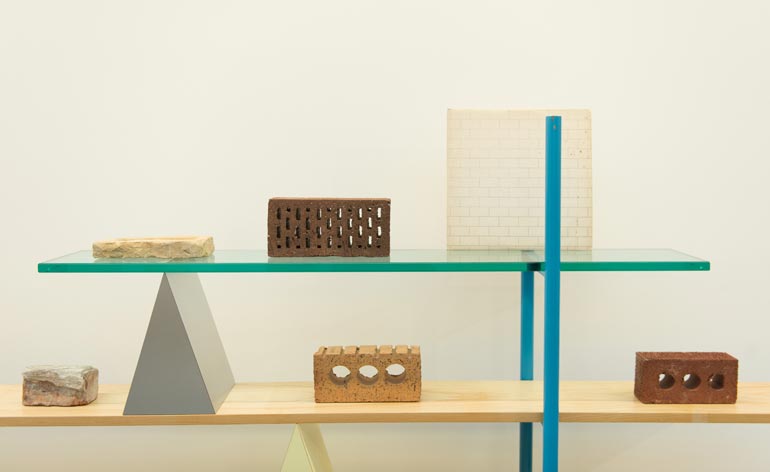
Maki Suzuki's collection of building materials sits upon Andrea Branzi's 'Gritti Bookcase' from 1981.
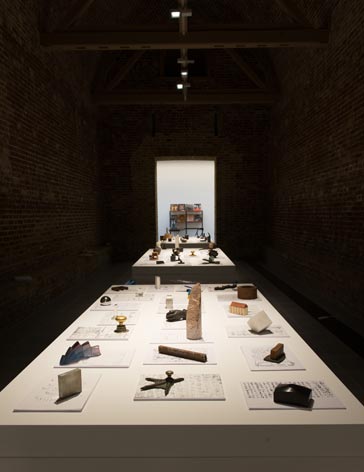
Perhaps the most remarkable collection has a space all to itself: Enzo Mari's found object paper weights. Spread out on a spotlit table, the collection assumes the role of museum compendium
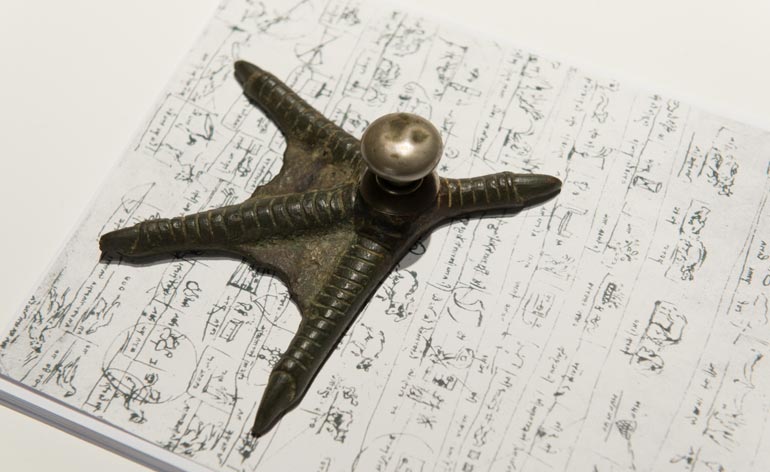
From Enzo Mari's collection: a striking cast of a bird's foot, stamping down sheets of paper.
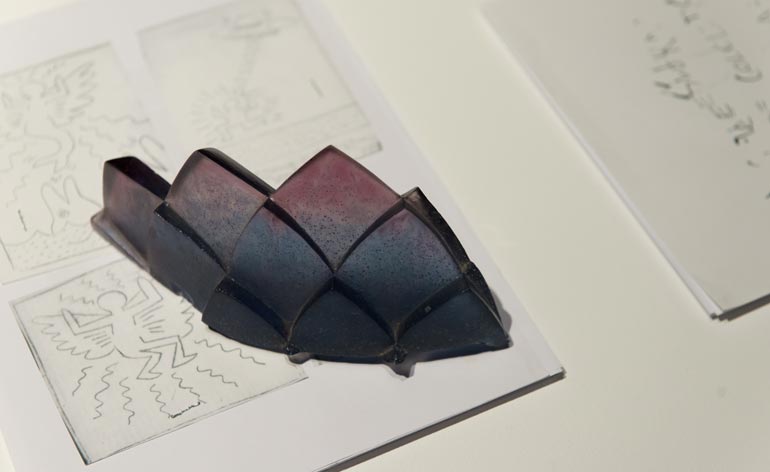
Enzo Mari contrasts a mysterious, crystal-like paperweight with a joyous Keith Haring doodle
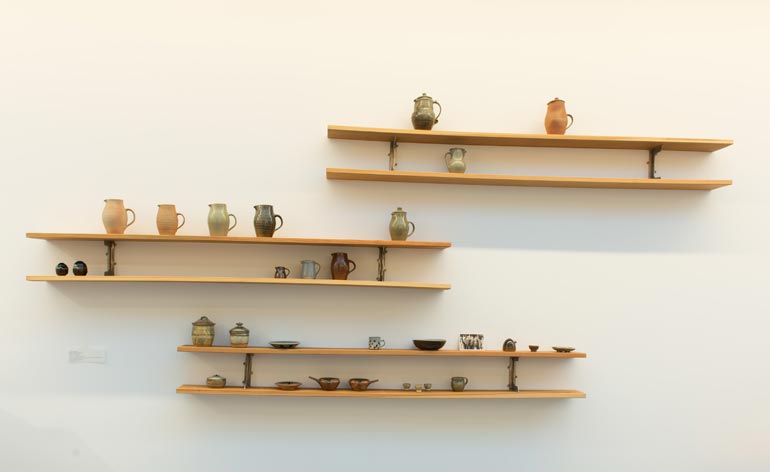
Max Lamb and Gemma Holt's collection of Bernard Leach pottery seems almost archaeological set upon three sets of simply bracketed shelving. Shelving, co-produced by Museion, Bolzano, Italy and Pinacoteca Giovanni e Marella Agnelli, Turin, Italy
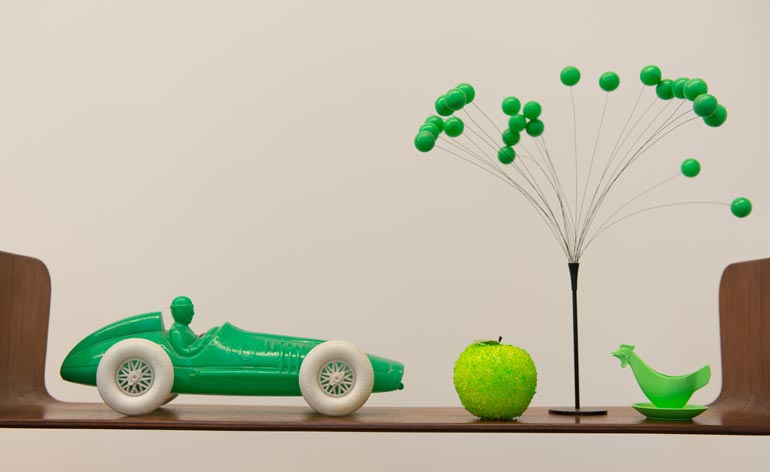
Designer Bethan Laura Wood's collection is characteristically flouro. Shelving
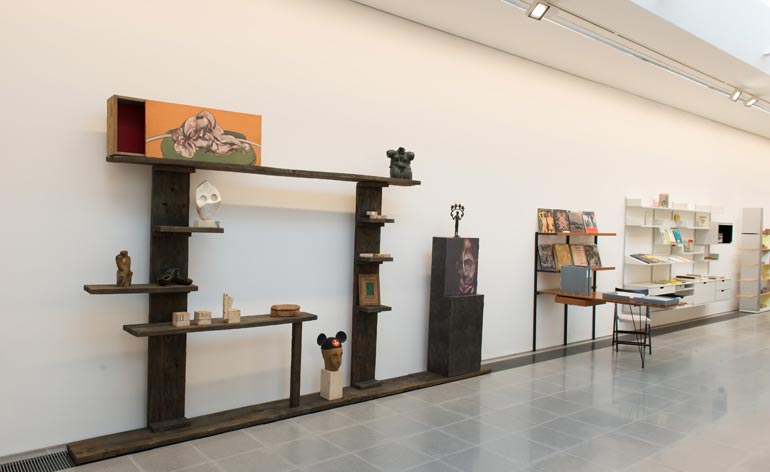
Many of the shelves are rare one-offs, secured from private lenders with a lot of help from Milan's Nilufar Gallery, including Andrea Branzi's wooden and steel 'Grandi Legni' shelving system, left, from 2009.
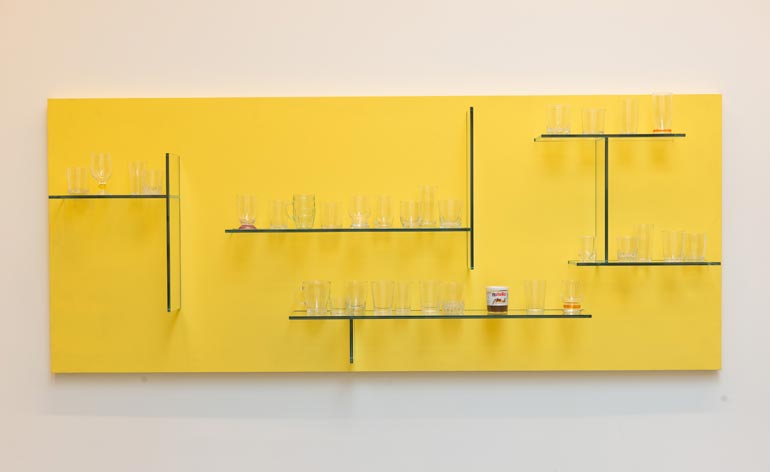
Andrea Branzi's cantilevered glass 'Wall Bookshelf' from 2011 appears as weightless as the wares it holds.
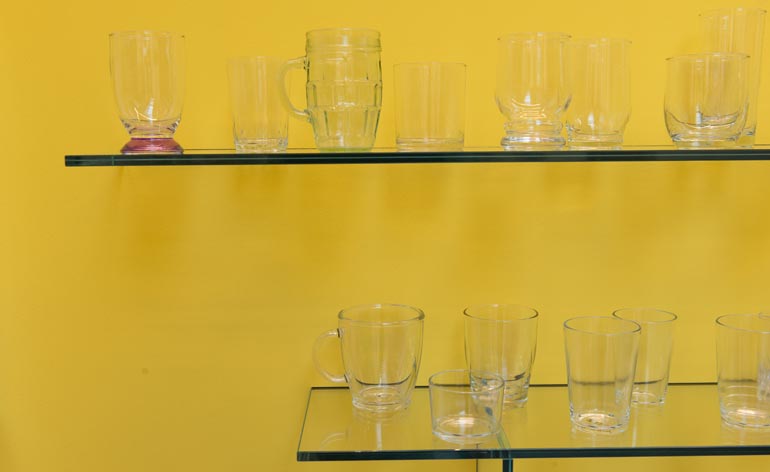
Glassware from the collection of Daniel Eatock
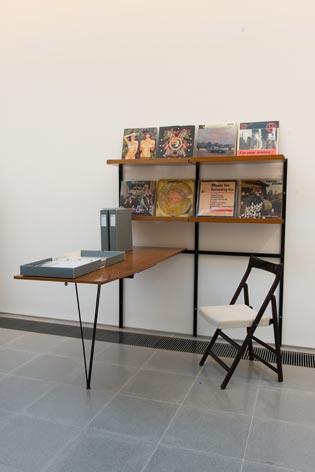
Osvaldo Borsani's integrated modular shelving unit and desk from 1947-1955.
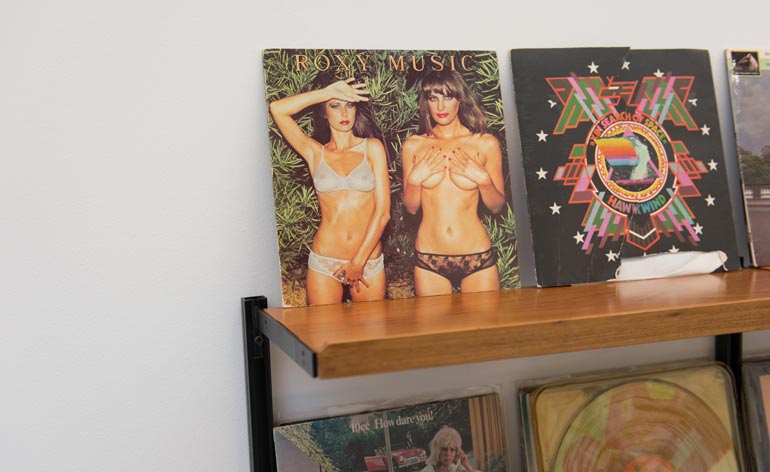
Paul Neale's display sleeves, ranging from Roxy Music to Hawkwind
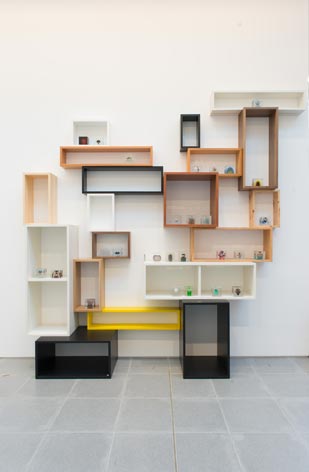
Cubes within cubes: Gamper's 'Together Library' showcases a selection of curios set in resin. Co-produced by Museion, Bolzano, Italy and Pinacoteca Giovanni e Marella Agnelli, Turin, Italy
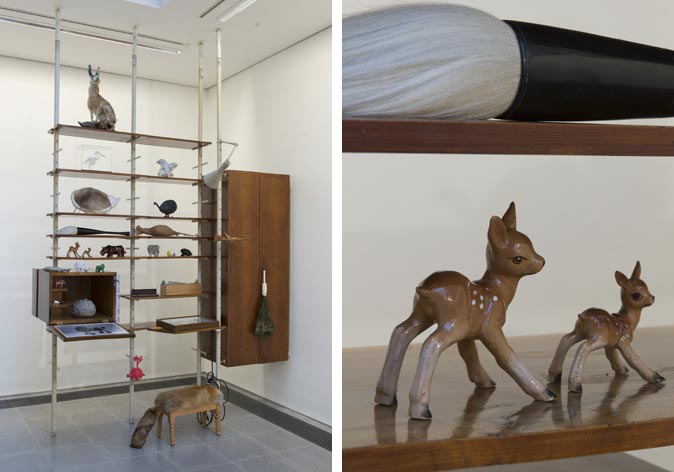
On a 1946 bookcase by Anna Castelli Ferrieri is a collection of trinkets ranging from porcelain deer to a stuffed hair (by way of a furry stool complete with tail). This animal menagerie comes courtesy of Jurgen Bey. Shelving
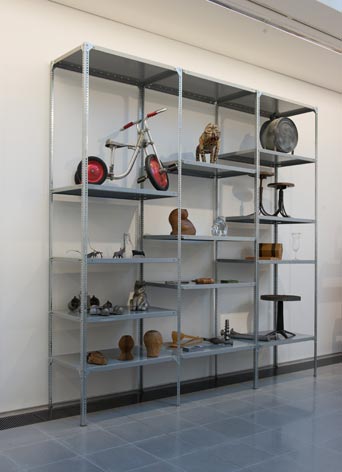
Ron Arad's objects are displayed on a 1947 Dexion Slotted Angle shelving system (reproduced in 2014), designed by Demetrius Comino. Shelving
ADDRESS
Serpentine Sackler Gallery
Kensington Gardens
London W2 3XA
Wallpaper* Newsletter
Receive our daily digest of inspiration, escapism and design stories from around the world direct to your inbox.
-
 The Subaru Forester is the definition of unpretentious automotive design
The Subaru Forester is the definition of unpretentious automotive designIt’s not exactly king of the crossovers, but the Subaru Forester e-Boxer is reliable, practical and great for keeping a low profile
By Jonathan Bell
-
 Sotheby’s is auctioning a rare Frank Lloyd Wright lamp – and it could fetch $5 million
Sotheby’s is auctioning a rare Frank Lloyd Wright lamp – and it could fetch $5 millionThe architect's ‘Double-Pedestal’ lamp, which was designed for the Dana House in 1903, is hitting the auction block 13 May at Sotheby's.
By Anna Solomon
-
 Naoto Fukasawa sparks children’s imaginations with play sculptures
Naoto Fukasawa sparks children’s imaginations with play sculpturesThe Japanese designer creates an intuitive series of bold play sculptures, designed to spark children’s desire to play without thinking
By Danielle Demetriou
-
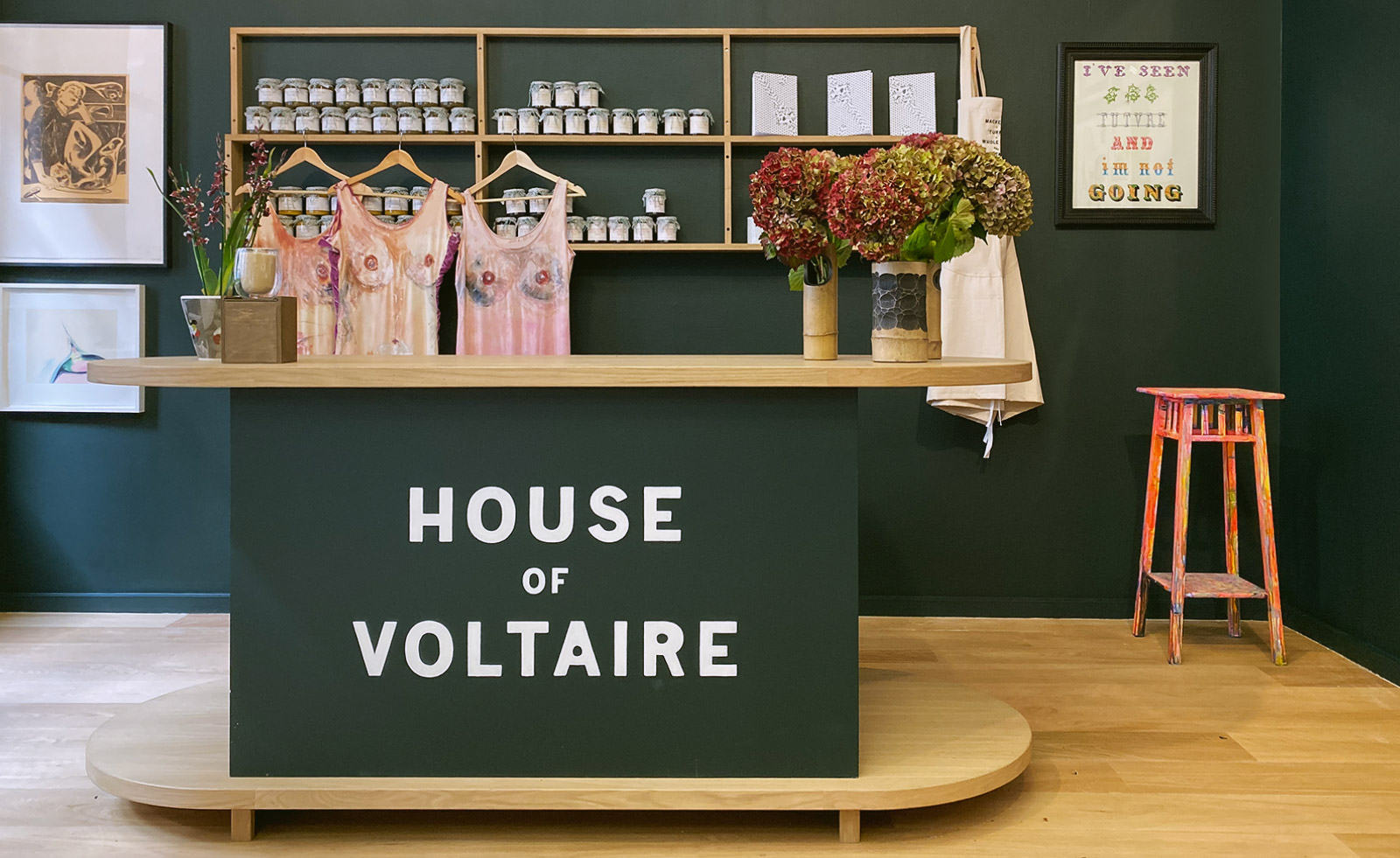 Studio Voltaire’s art and design store is popping up in Mayfair
Studio Voltaire’s art and design store is popping up in MayfairThe not-for-profit gallery’s House of Voltaire opens at Cork Street Galleries, with over 150 new and exclusive works on sale in the temporary space
By Jessica Klingelfuss
-
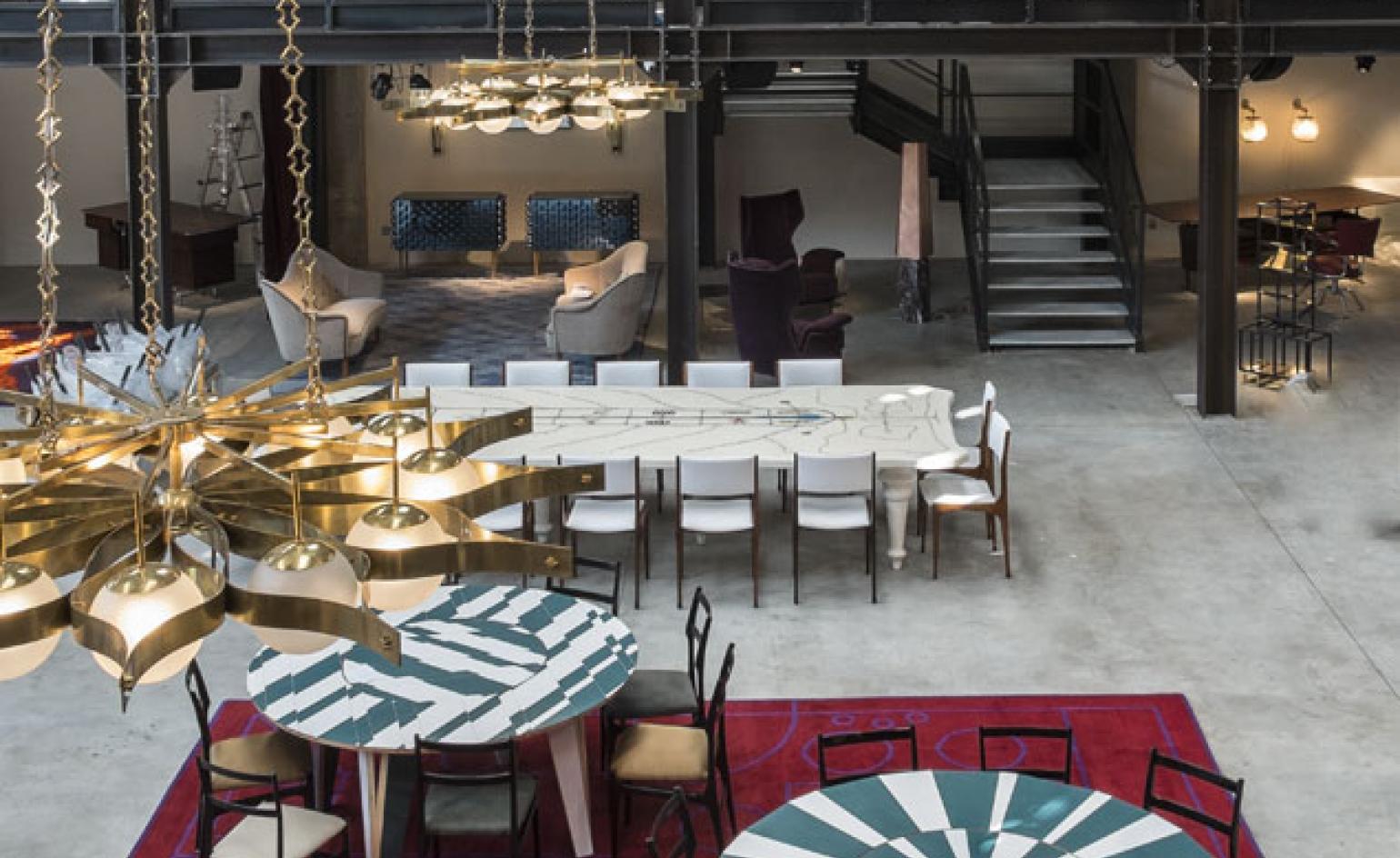 The Nilufar Depot: function and style meet in Milan’s new treasure trove
The Nilufar Depot: function and style meet in Milan’s new treasure troveBy JJ Martin